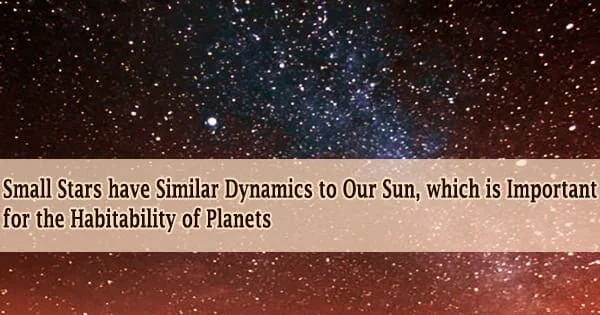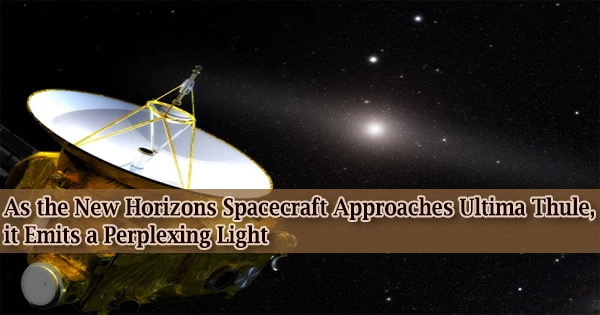According to Rice University researchers, stars spread around the galaxy may be more alike than previously imagined. Rice scientists have discovered that “cool” stars like the sun have dynamic surface behaviors that influence their energy and magnetic surroundings, according to new modeling studies.
The magnetic activity of a star is crucial in determining whether or not it has planets that potentially support life. Alison Farrish, a Rice postdoctoral researcher, and astrophysicists David Alexander and Christopher Johns-Krull reported their findings in The Astrophysical Journal.
The study connects the rotation of cool stars to the behavior of their surface magnetic flux, which drives the star’s coronal X-ray luminosity, in a way that could help scientists forecast how magnetic activity affects any exoplanets in their systems.
Another study headed by Farrish and Alexander found that a star’s “weather” might make planets in its “Goldilocks zone” inhospitable.
“All stars spin down over their lifetimes as they shed angular momentum, and they get less active as a result,” Farrish said. “We think the sun in the past was more active and that might have affected the early atmospheric chemistry of Earth. So thinking about how the higher energy emissions from stars change over long timescales is pretty important to exoplanet studies.”
“More broadly, we’re taking models that were developed for the sun and seeing how well they adapt to stars,” said Johns-Krull.
Based on the little evidence available, the researchers set out to mimic what far-flung stars are like. The spin and flux of some stars, as well as their classification types F, G, K, and M, which revealed information about their sizes and temperatures, have been determined.
All-stars like the sun fuse hydrogen and helium in their cores and that energy is first carried in the radiation of photons toward the surface. But stars with less than a third of the mass of the sun don’t have a radiative zone; they’re convective everywhere.
Johns-Krull
They compared the features of the sun, a G-type star, with what they knew about other cool stars using its Rossby number, a measure of stellar activity that combines the speed of rotation with underlying fluid flows that influence the distribution of magnetic flux on a star’s surface. Their models show that each star’s “space weather” influences circumstances on its various planets in a similar way.
“The study suggests that stars at least cool stars are not too dissimilar from each other,” Alexander said. “From our perspective, Alison’s model can be applied without fear or favor when we look at exoplanets around M or F or K stars, as well, of course, as other G stars.”
“It also suggests something much more interesting for established stellar physics, that the process by which a magnetic field is generated may be quite similar in all cool stars. That’s a bit of a surprise,” he said. This could include stars that, unlike the sun, are convective down to their cores.
“All stars like the sun fuse hydrogen and helium in their cores and that energy is first carried in the radiation of photons toward the surface,” Johns-Krull said.
However, it reaches a zone around 60% to 70% of the way through that is simply too opaque, and it begins to convect. The energy radiates away from the hot matter, and the cooled matter falls back down.
“But stars with less than a third of the mass of the sun don’t have a radiative zone; they’re convective everywhere,” he said.
“A lot of ideas about how stars generate a magnetic field rely on there being a boundary between the radiative and the convection zones, so you would expect stars that don’t have that boundary to behave differently. This paper shows that in many ways, they behave just like the sun, once you adjust for their own peculiarities.”
Farrish, who recently received her doctorate from Rice and will shortly start a postdoctoral research position at NASA’s Goddard Space Flight Center, pointed out that the concept only applies to unsaturated stars.
“The most magnetically active stars are the ones we call ‘saturated,’” Farrish said.
An increase in magnetic activity stops causing a rise in high-energy X-ray emission after a certain point. It’s still a mystery why throwing more magnetic onto the star’s surface doesn’t result in more emission.
“Conversely, the sun is in the unsaturated regime, where we do see a correlation between magnetic activity and energetic emission,” she said. “That happens at a more moderate activity level, and those stars are of interest because they might provide more hospitable environments for planets.”
“The bottom line is the observations, which span four spectral types including both fully and partially convective stars, can be reasonably well represented by a model generated from the sun,” Alexander said.
“It also reinforces the idea that even though a star that is 30 times more active than the sun may not be a G-class star, it’s still captured by the analysis that Alison has done.”
“We do have to be clear that we’re not simulating any specific star or system,” he said. “We are saying that statistically, the magnetic behavior of a typical M star with a typical Rossby number behaves in a similar fashion to that of the sun which allows us to assess its potential impact on its planets.”
The activity cycle of a star is a significant wild card that can’t be incorporated into the models without years of observation. (The sun has an 11-year cycle, as demonstrated by sunspot activity, which occurs when the magnetic field lines of the sun are most disrupted.)
Johns-Krull said the model will still be useful in many ways.
“One of my areas of interest is studying very young stars, many of which are, like low-mass stars, fully convective,” he said. “Many of these have disc material around them and are still forming planets. How they interact is mediated, we think, by the stellar magnetic field. So, Alison’s modeling work can be used to learn about the large-scale structure of very magnetically active stars, and that can then allow us to test some ideas about how these young stars and their disks interact.”
The paper’s co-author is Minjing Li, a visiting undergraduate from China’s University of Science and Technology. Alexander is the head of the Rice Space Institute and a professor of physics and astronomy. Johns-Krull is a physics and astronomy professor. The research was funded by an INSPIRE grant from the National Science Foundation.
















